Doctor Who and the Art of Adaptation
Science Fiction Television
Series Editor: A. Bowdoin Van Riper
From Starship Captains to Galactic Rebels: Leaders in Science Fiction Television, by Kimberly Yost, 2014
Joss Whedons Dollhouse: Confounding Purpose, Confusing Identity, edited by Sherry Ginn, Alyson R. Buckman, and Heather M. Porter, 2014
Doctor Who and the Art of Adaptation: Fifty Years of Storytelling, by Marcus K. Harmes, 2014
Doctor Who and the Art of Adaptation
Fifty Years of Storytelling
Marcus K. Harmes
ROWMAN & LITTLEFIELD
Lanham Boulder New York Toronto Plymouth, UK
Published by Rowman & Littlefield
4501 Forbes Boulevard, Suite 200, Lanham, Maryland 20706
www.rowman.com
10 Thornbury Road, Plymouth PL6 7PP, United Kingdom
Copyright 2014 by Rowman & Littlefield
All rights reserved. No part of this book may be reproduced in any form or by any electronic or mechanical means, including information storage and retrieval systems, without written permission from the publisher, except by a reviewer who may quote passages in a review.
British Library Cataloguing in Publication Information Available
Library of Congress Cataloging-in-Publication Data
Harmes, Marcus K.
Doctor Who and the art of adaptation : fifty years of storytelling / Marcus K. Harmes.
pages cm. (Science fiction television)
Includes bibliographical references and index.
ISBN 978-1-4422-3284-6 (cloth : alk. paper) ISBN 978-1-4422-3285-3 (ebook)
1. Doctor Who (Television program : 1963-1989) 2. Doctor Who (Television program : 2005- ) 3. History on television. 4. Television and history. 5. Science fiction television programsGreat BritainHistory and criticism. I. Title.
PN1992.77.D6273H36 2014
791.45'72dc23
2013046794
 TM The paper used in this publication meets the minimum requirements of American National Standard for Information Sciences Permanence of Paper for Printed Library Materials, ANSI/NISO Z39.48-1992.
TM The paper used in this publication meets the minimum requirements of American National Standard for Information Sciences Permanence of Paper for Printed Library Materials, ANSI/NISO Z39.48-1992.
Printed in the United States of America
Acknowledgments
No book is ever truly a solitary or singular task, and I have incurred a number of debts when writing this one. Most of all my thanks are due to Dr. A. Bowdoin Van Riper, the editor of this ongoing series on science fiction television. From the earliest days of the proposal for the book through many stages of editorial development, Bow has been of inestimable and generous assistance. Ideas and advice on both Doctor Who and adaptation theory have come from a lively group of friends and colleagues here in Queensland, including Dr. Catriona Mills, Dr. Kim Wilkins, and Oliver Chadwick, all of the University of Queensland. Dr. Mills, as well as Alexander Cummins of Bristol University and Dr. Murray Leeder of Carleton University all kindly allowed me to see works in manuscript form. Dr. Richard Scully of the University of New England read the entire work in manuscript. He made many wonderful suggestions that immeasurably assisted me. I cannot thank him enough for his generosity. Dr. Susan Hopkins from the University of Southern Queensland read portions of the work in manuscript and made a number of helpful suggestions. My mother, father, and sister have provided unending support of all kinds, including listening to ideas and reading drafts, all the way through the writing of this text. Kim Moore, the interlibrary loans officer at the University of Southern Queensland, was unfailingly determined and consistently successful in her efforts to track down sources I needed. Darren Dickson offered much-needed technical assistance. I am by training a historian of British studies, including its film and television histories, and for my whole life have been a viewer of Doctor Who. Bringing these two together in this book has been a challenging but most pleasant task, made the more pleasant by the support, friendship, and guidance of those people thanked here.
Editorial Note
Quotations from individual episodes of Doctor Who come from either the transcripts freely available on the Chakoteya site, or else are my own transcriptions made from viewings of the episodes. Throughout this book the stories starring William Hartnell are referred to by the overall title rather than individual episode titles. These overall titles are generally agreed upon and consistently used in most reference books about Doctor Who. For two-part stories from the revived series, both titles are provided.
Introduction
You know, youre fast becoming a prey to every clich-ridden convention of the American West.
The Doctor, The Gunfighters (1966)
It has been tried before.
The Doctor, The Androids of Tara (1978)
These two lines of dialogue spoken by the Doctor are ironic, even rather cheeky, acknowledgments that Doctor Who borrows heavily from the themes, imagery, and even entire plots of many other sources. The first quote is from The Gunfighters, a 1966 story which I will revisit in more detail in chapter 8, and which is a rare instance of a British western. It is filled with actors attempting (bravely in some instances) to perform in American accents and features many gunfights, horses, and western ballads. As suchas the Doctor himself helpfully observes at one pointit leaves no clich of the western untouched. The Androids of Tara contains some features in common with The Gunfighters. It is a story of adventure, capture, fights, and escapes from peril. It shares even more in common with another source from beyond Doctor Whos own diegesis (or internal storytelling): Anthony Hopes The Prisoner of Zenda. Hope, a Victorian lawyer who found success as a novelist, published his swashbuckler in 1894. Since then the novel has been adapted on numerous occasions, including as a play that opened in New York in 1895, as an operetta in 1922, and as major motion pictures in 1937 and 1952 (although there had been a film version as early as 1913). Then in 1978 it resurfaced, barely disguised, as a Doctor Who serial, from which the second quote above comes. The Androids of Tara tells the story of plotting and adventure in the fictional kingdom of Tara. The young Prince Reynart is shortly to be crowned king but is kidnapped by the wicked Count Grendel. The Princes sympathizers (including the Doctor) use an android double of the Prince as a substitute during the coronation, before eventually defeating Grendels schemes. Grendel, however, is not captured but lives to fight another day. It is not a long or difficult process to find the analogues to The Prisoner of Zenda, which tells the story of Rudolf Rassendyll, who is a close double of the Prince of Zenda and stands in for him during the coronation after the Prince has been kidnapped by Black Michael. Michaels plans are thwarted, but he lives to fight another day.
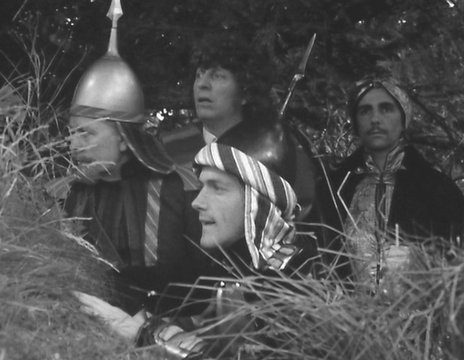
The Doctor becomes involved in a plot to rescue the Prince of Tara, or is that Zenda?
In this instance, the similarities are obvious, and indeed the makers of this Doctor Who storyincluding the scriptwriter David Fisher, producer Graham Williams, and director Michael Hayeslost no opportunity to hammer home the message that their story is a pastiche of Hopes novel. The Prisoner of Zenda begins with the hero, Rudolf, quietly fishing, which is how Prince Reynarts men find the Doctor at the start of his adventure. The Doctors ideas for rescuing the Prince by using a double seems an excellent idea to his allies, but it has been tried before as the Doctor admits in a wry acknowledgment of Hopes inspiration. The major differencethere are robots in the

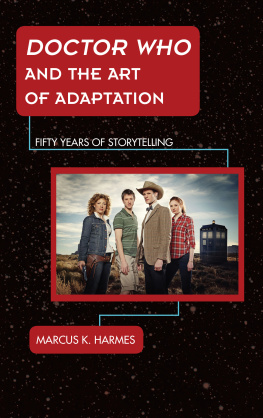
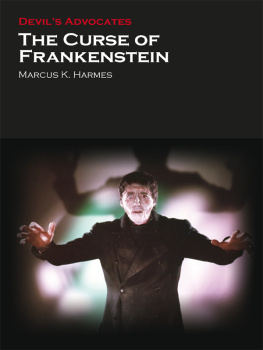

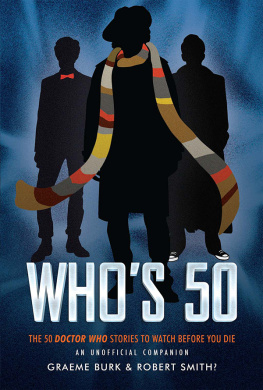

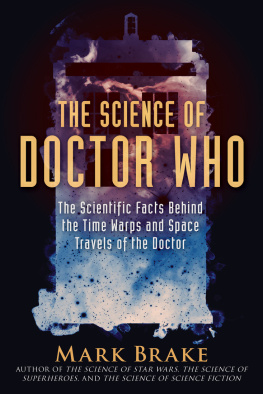


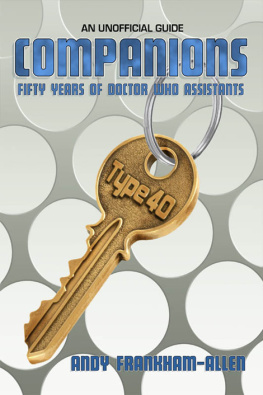
 TM The paper used in this publication meets the minimum requirements of American National Standard for Information Sciences Permanence of Paper for Printed Library Materials, ANSI/NISO Z39.48-1992.
TM The paper used in this publication meets the minimum requirements of American National Standard for Information Sciences Permanence of Paper for Printed Library Materials, ANSI/NISO Z39.48-1992.